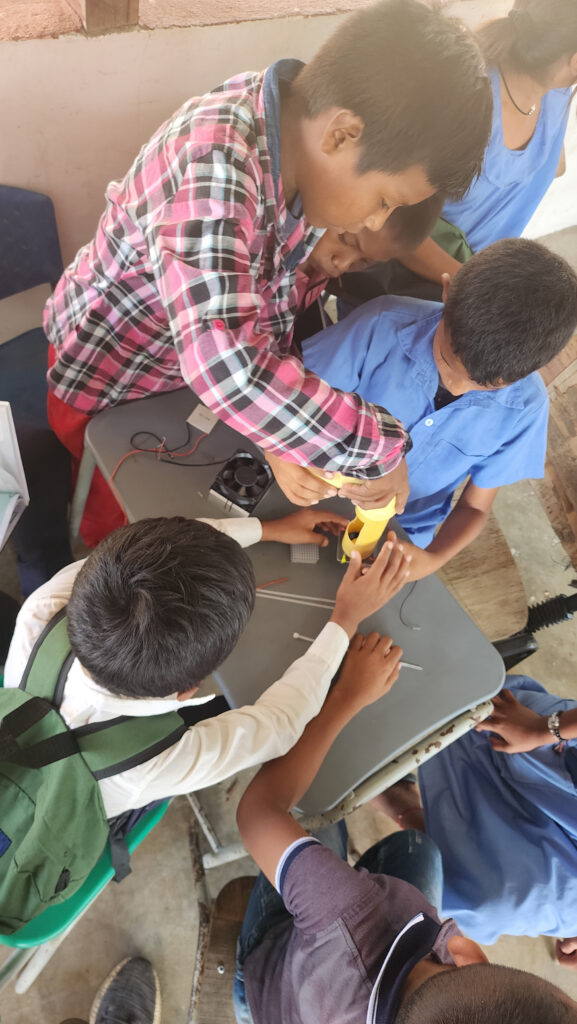Dance of water

The Eternal Dance of Water: Transformation and the Promise of Atmospheric Vapor Harvesting
Water, the elixir of life, is constantly in motion and transformation on our planet. Its cycle, driven by solar energy, is a seamless choreography of state changes and flows that sustain life as we know it. Understanding this “eternal dance” and, even more so, learning how to intervene sustainably, is crucial to addressing the water challenges of our time.
The Water Cycle: A Symphony of States
Water transformation is at the heart of the hydrological cycle. This fundamental process is orchestrated through several key stages:
Evaporation: The sun heats the surfaces of oceans, lakes, rivers, and soils, converting liquid water into water vapor. Plants also contribute significantly to this process through transpiration, releasing water vapor from their leaves.
Condensation: As water vapor rises into the atmosphere, it cools. This cooling causes the vapor to transform back into tiny liquid water droplets or ice crystals, forming clouds.
Precipitation: When these droplets or crystals clump together and reach a sufficient size and weight, they fall to Earth as rain, snow, hail, or dew.
Infiltration and Runoff: Once at the surface, water can infiltrate the ground to form underground aquifers or flow over the surface as runoff, feeding rivers and lakes, and eventually returning to the oceans to restart the cycle.
This constant circulation of water ensures the availability of this resource, but climate change is intensifying this cycle, causing extreme events such as prolonged droughts or severe flooding in different regions. It is in this context that innovation in water management becomes imperative.
Water Vapor Harvesting: An Unexpected Source
Historically, humanity has relied heavily on surface and groundwater sources. However, in a world where water scarcity is a growing reality for millions of people, harvesting water vapor directly from the atmosphere is emerging as a promising alternative.
The air, even in arid regions, contains a considerable amount of water vapor. Modern technology seeks to emulate natural processes, such as the formation of dew or the ability of certain organisms (such as the Namibian beetle) to collect moisture. The main strategies for water vapor harvesting include:
Dew Point Condensation: This is the most common technique and relies on cooling the air below its dew point, the temperature at which water vapor condenses into liquid water. Atmospheric water generators use cooling systems for this purpose, although their energy efficiency can be a limitation in some applications.
Desiccant and Hygroscopic Materials: These are materials with a high affinity for moisture, capable of absorbing water vapor from the air. Once saturated, the water can be extracted by heating the material, releasing the vapor, which is then condensed and collected. Silica gel and certain advanced gels or nanomaterials fall into this category, offering the possibility of capturing water even in low relative humidity conditions.
Passive Condensation and Mist Nets: In areas with frequent fog, fine-mesh nets can intercept tiny water droplets suspended in the air, collecting them by gravity. Passive designs, often inspired by biomimicry, seek to take advantage of natural temperature differences to induce condensation without requiring external energy.
Solar Hydroponic Panels: Some technologies combine solar energy with vapor capture. Electricity generated by solar panels can power fans that direct air through absorbent materials or heat the air to direct the vapor into a condensation chamber.
Challenges and Future
While water vapor harvesting offers significant hope for water supply in remote or drought-affected regions, it still faces challenges. Energy efficiency, the cost of materials and infrastructure, and the need to optimize systems for different climatic conditions are areas of ongoing research and development.
Atmosferic Water Generator
Water Capture.
In addition to the academic and awareness activities, we designed a scale model of an atmospheric water collector by condensation, so children have direct access to knowledge and its conscious use. The water that is present in the sea, rivers and streams is evaporated by the sun generating a process called evaporation. In this process, the capturing machine takes the evaporated water and emulates the process of precipitation and transforms it into liquid water. Subsequently, with the help of filters, it will be converted into drinking water. Suitable for human consumption and other species.
-
THE SEEDS OF WATER HOW TO HELP
Be part of this wave! Be part of the team Provides financial support and donations. Spread the KODAMA message Be a volunteer CONTACT The Seeds of Water Program, designed by KODAMA, aims to educate and raise awareness about the characteristics, phenomena and dynamics of water, which allow the development of practices that favor the biological,…
-
SEMILLAS DE AGUA
El Programa Semillas de Agua, diseñado por KODAMA, busca educar y concientizar sobre las características, fenómenos y dinámicas del agua, que permitan el desarrollo de prácticas que favorezcan el entorno biológico, social y cultural.
